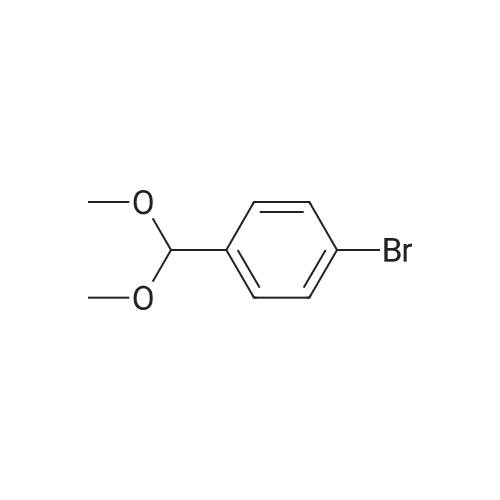Enhanced antifungal activity of posaconazole against Candida auris by HIV protease inhibitors, atazanavir and saquinavir
Elgammal, Yehia
;
Salama, Ehab A.
;
Seleem, Mohamed N.
SCI REP-UK,2024,14(1):1571.
DOI:
10.1038/s41598-024-52012-8
PubMed ID:
38238403
More
Abstract: The increasing incidence and dissemination of multidrug-resistant Candida auris represents a serious global threat. The emergence of pan-resistant C. auris exhibiting resistance to all three classes of antifungals magnifies the need for novel therapeutic interventions. We identified that two HIV protease inhibitors, atazanavir and saquinavir, in combination with posaconazole exhibited potent activity against C. auris in vitro and in vivo. Both atazanavir and saquinavir exhibited a remarkable synergistic activity with posaconazole against all tested C. auris isolates and other medically important Candida species. In a time-kill assay, both drugs restored the fungistatic activity of posaconazole, resulting in reduction of 5 and 5.6 log10, resp. Furthermore, in contrast to the individual drugs, the two combinations effectively inhibited the biofilm formation of C. auris by 66.2 and 81.2%, resp. Finally, the efficacy of the two combinations were tested in a mouse model of C. auris infection. The atazanavir/posaconazole and saquinavir/posaconazole combinations significantly reduced the C. auris burden in mice kidneys by 2.04- (99.1%) and 1.44-log10 (96.4%) colony forming unit, resp. Altogether, these results suggest that the combination of posaconazole with the HIV protease inhibitors warrants further investigation as a new therapeutic regimen for the treatment of C. auris infections.
Purchased from AmBeed:
198904-31-3 ;
127779-20-8

Novel combinatorial approach: Harnessing HIV protease inhibitors to enhance amphotericin B’s antifungal efficacy in cryptococcosis
Nour M. Alkashef
;
Mohamed N. Seleem
;
PloS One,2024,19(8):e0308216.
DOI:
10.1371/journal.pone.0308216
PubMed ID:
39088434
More
Abstract: Cryptococcosis is a fungal infection that is becoming increasingly prevalent worldwide, particularly among individuals with compromised immune systems, such as HIV patients. Amphotericin B (AmB) is the first-line treatment mainly combined with flucytosine. The scarcity and the prohibitive cost of this regimen urge the use of fluconazole as an alternative, leading to increased rates of treatment failure and relapses. Therefore, there is a critical need for efficient and cost-effective therapy to enhance the efficacy of AmB. In this study, we evaluated the efficacy of the HIV protease inhibitors (PIs) to synergize the activity of AmB in the treatment of cryptococcosis. Five PIs (ritonavir, atazanavir, saquinavir, lopinavir, and nelfinavir) were found to synergistically potentiate the killing activity of AmB against Cryptococcus strains with ?FICI ranging between 0.09 and 0.5 against 20 clinical isolates. This synergistic activity was further confirmed in a time-kill assay, where different AmB/PIs combinations exhibited fungicidal activity within 24 hrs. Additionally, PIs in combination with AmB exhibited an extended post-antifungal effect on treated cryptococcal cells for approximately 10 hrs compared to 4 hours with AmB alone. This promising activity against cryptococcal cells did not exhibit increased cytotoxicity towards treated kidney cells, ruling out the risk of drug combination-induced nephrotoxicity. Finally, we evaluated the efficacy of AmB/PIs combinations in the Caenorhabditis elegans model of cryptococcosis, where these combinations significantly reduced the fungal burden of the treated nematodes by approximately 2.44 Log10 CFU (92.4%) compared to the untreated worms and 1.40 Log10 ((39.4%) compared to AmB alone. The cost-effectiveness and accessibility of PIs in resource-limited geographical areas compared to other antifungal agents, such as flucytosine, make them an appealing choice for combination therapy.
Purchased from AmBeed:
206361-99-1 ;
159989-64-7 ;
198904-31-3 ;
174484-41-4 ;
192725-17-0 ;
127779-20-8 ;
161814-49-9 ;
155213-67-5 ;
150378-17-9

Need for a Standardized Translational Drug Development Platform: Lessons Learned from the Repurposing of Drugs for COVID-19
Frauke Assmus
;
Jean-Sélim Driouich
;
Rana Abdelnabi
, et al.
Microorganisms,2022,10(8):1639.
DOI:
10.3390/microorganisms10081639
PubMed ID:
36014057
More
Abstract: In the absence of drugs to treat or prevent COVID-19, drug repurposing can be a valuable strategy. Despite a substantial number of clinical trials, drug repurposing did not deliver on its promise. While success was observed with some repurposed drugs (e.g., remdesivir, dexamethasone, tocilizumab, baricitinib), others failed to show clinical efficacy. One reason is the lack of clear translational processes based on adequate preclinical profiling before clinical evaluation. Combined with limitations of existing in vitro and in vivo models, there is a need for a systematic approach to urgent antiviral drug development in the context of a global pandemic. We implemented a methodology to test repurposed and experimental drugs to generate robust preclinical evidence for further clinical development. This translational drug development platform comprises in vitro, ex vivo, and in vivo models of SARS-CoV-2, along with pharmacokinetic modeling and simulation approaches to evaluate exposure levels in plasma and target organs. Here, we provide examples of identified repurposed antiviral drugs tested within our multidisciplinary collaboration to highlight lessons learned in urgent antiviral drug development during the COVID-19 pandemic. Our data confirm the importance of assessing in vitro and in vivo potency in multiple assays to boost the translatability of pre-clinical data. The value of pharmacokinetic modeling and simulations for compound prioritization is also discussed. We advocate the need for a standardized translational drug development platform for mild-to-moderate COVID-19 to generate preclinical evidence in support of clinical trials. We propose clear prerequisites for progression of drug candidates for repurposing into clinical trials. Further research is needed to gain a deeper understanding of the scope and limitations of the presented translational drug development platform.
Keywords:
COVID-19 ;
drug repurposing ;
translational medicine ;
pandemics ;
clinical trials
Purchased from AmBeed:
55981-09-4 ;
23828-92-4 ;
198904-31-3 ;
59721-29-8 ;
259793-96-9 ;
1190307-88-0 ;
481-49-2 ;
155213-67-5 ;
61718-82-9

Prediction of Chameleonic Efficiency
Laurent David
;
Mark Wenlock
;
Patrick Barton
, et al.
ChemMedChem,2021,16(17):2669-2685.
DOI:
10.26434/chemrxiv.14748879.v1
PubMed ID:
34240561
More
Abstract: Chameleonic properties, i.e., the capacity of a molecule to hide polarity in non-polar environments and expose it in water, help achieving sufficient permeabilily and solubility for drug molecules with high MW.We present models ofexperimental measures of polarity for a set of 24 FDA approved drugs (MW 405-1113)and one PROTAC(MW 1034). Conformational ensembles in aqueous and non-polar environments were generated using molecular dynamics, A linearregression model that predicts chromatographic apparent polarity(EPSA) with a mean unsigned error of 10 A2 was derived based on separate terms for donor, acceptor, and tolal molecular SASA. A good correlation (R'0.92) with an experimental measure of hydrogen bond donor potential, Alog Poa, was found for the mean hydrogenbond donor SASA of the confommational ensemblescaled with Abraham's A hydrogen bond acidity. Two quantitative measures of chameleonic behaviour, the chameleonic efficlency indices, are introduced. We envislon that the methods presented herein will be useful to triage designed molecules and prioritize those with the best chance of achieving acceptable permeabilily and solubility.
Keywords:
chameleonic properties ;
polar surface area ;
hydrogen bonding ;
molecular dynamics
Purchased from AmBeed:
1257044-40-8 ;
198904-31-3 ;
173334-57-1 ;
1190307-88-0


 Chemistry
Chemistry
 Pharmaceutical Intermediates
Pharmaceutical Intermediates
 Inhibitors/Agonists
Inhibitors/Agonists
 Material Science
Material Science















 For Research Only
For Research Only
 120K+ Compounds
120K+ Compounds
 Competitive Price
Competitive Price
 1-2 Day Shipping
1-2 Day Shipping




















